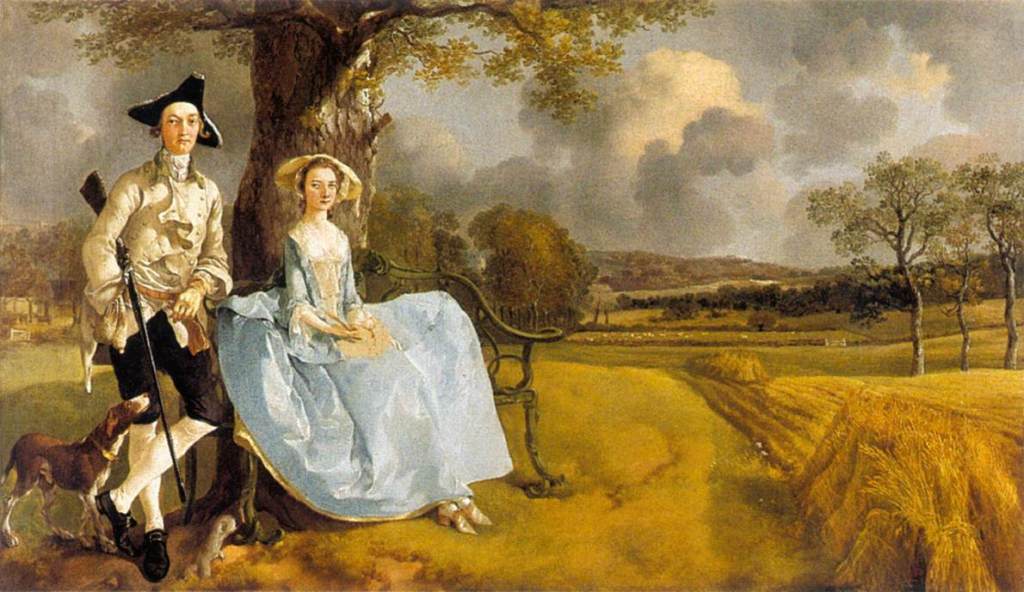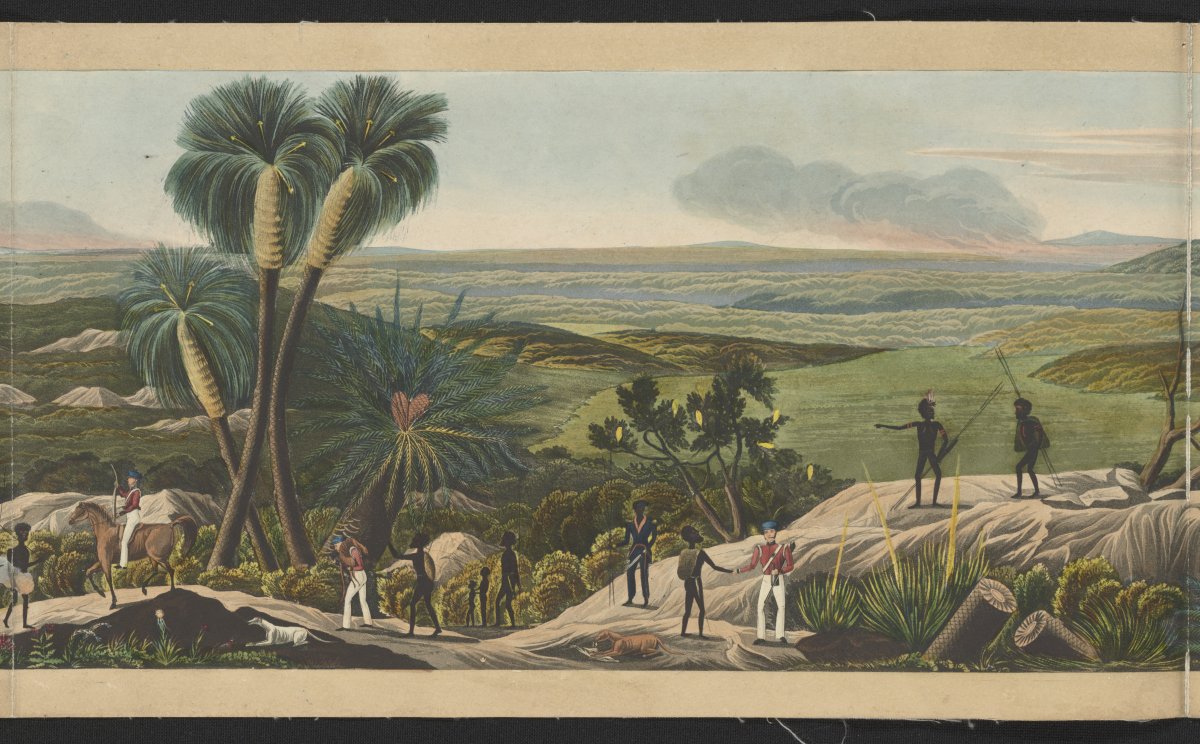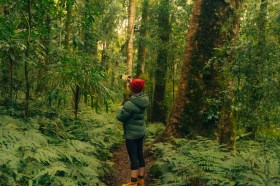Written by Philippa O’Brien and published by the Ellenbrook Cultural Foundation, No Stone Without a Name is a meticulously researched and beautifully written collection of colonial artwork, accompanied by cultural commentary, historical anecdotes and contemporary excerpts. Examining the concepts of terra nullius (a land without a people) and nullum est sine nomine saxum (no stone without a name), this book exposes how colonial art and depictions of Aboriginal people have long contributed to racism and the implementation of discriminatory legislation.
With chapters touching on colonial dynasties, Aboriginal life, scientific expeditions, ownership, perspectives, weaponry, cartography and entitlement, this portable art history exhibition dismantles outdated ideals by shining new light on old images.
The distinctive aspects of the Australian environment shape artistic compositions, with vast horizons and alien landscapes that necessitated changes to the traditional concepts of composition, style and technique for colonial artists. Colonists’ conceptions of visual art were heavily shaped by European conceptions of landscape. European depictions of the Australian landscape were often filtered through a Eurocentric lens, so early colonists often perceived a lack of familiar culture as a lack of culture altogether; they lacked sufficient frames of reference, leading to the erasure and rewriting of pre-existing cultural and historical narratives.
The refusal of settler colonialism to recognise pre-existing conceptions of belonging and possession directly resulted in the denial of land, food, water and life to Aboriginal people, who did not initially oppose European invasion.
Ethnographic explorer, George Grey, may not have been able to completely escape his Eurocentrism, but he genuinely respected Indigenous cultures, and made great efforts to bridge gaps in communication and understanding. Grey, who advocated for racial integration, kept elaborate journals complete with detailed sketches of events and interactions, as well as of the places themselves. He understood the importance of Indigenous rock paintings, and was excited to replicate what he observed in his journals. He understood that the Aboriginal use of place names as being connected with conceptions of belonging, embodied by the words nullum est sine nomine saxum (no stone without a name) – a phrase to be found within his 1841 quote.
No Stone Without a Name contains a variety of Grey’s sketches from the expeditions he undertook in the 1840s, in addition to excerpts from the journals themselves.
Many of the artworks in this book directly rebut the idea of terra nullius. For example, convict Joseph Lycett’s engravings and watercolours depict Eora and Awabakal farming methods, along with scenes of Awabakal people defending their right to fish against intruding British sailors. Themes surrounding possession/dispossession, people/place, identity/belonging rest heavily across these pages, exposing history – or, ‘more accurately, the narrative we accept as history,’ as ‘the chief weapon of colonisation’.
Colonial morality was shaped by economic rights and property laws, more than utilitarian conceptions of the common good, except in situations where the common good may be weaponised in the service of settler colonialism. This is reflected in the way landscape painting becomes one (of many) means of possessing land for the colonists. Far from being a mere collection of landscapes, No Stone Without a Name features an impressive range of portraits, diary entries, botanical sketches, photographs, artefacts, sketches, notations of acquired land and reproductions of ancient cave art.
Hundreds of artworks span countless subjects. Francisco Pelsaert’s 1647 copper plate engravings of the Unlucky Voyage of the Ship Batavia are as captivating as Ferdinand Bauer’s scientifically impressive anatomical sketches of native Australian animals (1801-1802). The infamous feather-plucking Cousin Thomas or the Swan River Job (1829, hand coloured etching, artist unknown, publisher T McLean) depicts unpopular coloniser Thomas Peel in the unflattering light in which he was bathed by his contemporaries. Photographs of artefacts include engraved Kimberley seashells and 18th century tobacco boxes. An entire chapter is dedicated to cartographic discoveries, with highlights including Pierre Desceliers’ detailed 1550 planisphere depicting a semi-fictional southern land mass named Terre Australle.

Thomas Gainsborough’s Mr and Mrs Andrews (1750, oil on canvas) is a portrait of English middle-class pastoral idealism with overt themes of power and possession. The cultivated figures of Mr and Mrs Andrews, posing in their respective tri-cornered and lace-accented finery, contrast with the agricultural scene in which they are situated. Like the couple, the land is cultivated, and has clearly defined boundaries, revealing the Andrews’ mastery over nature and wildness. Mr Andrews’ prominent weapon and hound denote hunting and its associated connotations, with Mrs Andrews’ seated, hand-clasped passivity emphasising her husband’s relative power – an idealistic English wife in obedient repose. Although it is clear the couple have not cultivated the land with their own hands, it is clear that they are in possession of the land – a common theme throughout the artwork of the time.
William Westall’s visibly aged Self portrait (1820, oil on canvas) captures the likeness of an artist whose depictions of events and people capture more than just landscape. His pencil and watercolour coastal profiles include dates and measurements, accurately depicting land masses in the way that a botanist sketches plants. Westall’s pencil drawing of a Minang man (1801) is drawn in a classical style with reverent undertones, whereas his 1801 sketch, Natives of Western Australia, exudes graceless colonialism.
The portrait Sir James Stirling (1833) is accompanied by the story of how its subject almost rode down a 13-year-old girl named Ellen Mangles, whom he later married. Ellen’s father was an MP who was well-versed in the Australian colonies. A tale of political exploitation, cartographical forgery and shameful massacre ensues.
Thomas Phillips’ aristocratic portrait Lady Ellen Stirling portrays her as a rosy-cheeked brunette in his 1828 oil on canvas work, in which she wears formal black, and is surrounded by sumptuous crimson fabric. A hint of English landscape is revealed beneath the curtain. Her portrait speaks to the feminine flip side of the conquerors’ narrative, which has never been part of the dominant narrative.
The work of many colonial women is featured in this book, including (but not limited to) Jane Roberts, Mary Ann Friend, Jane Eliza Currie, Hannah Maria Hudson, Francis Louisa Bussell, Georgiana Molloy, Amelia Cleobulina Reveley, Jane King, Louisa Clifton and Elizabeth Irwin – serving to reinsert some missing perspectives into the narrative loosely known as history.
Yagan – a beloved Aboriginal figure now immortalised in sculptural form in Perth’s Yagan Square – was once sketched by farmer/lawyer/historian George Fletcher Moore, whose degrading drawing of Yagan’s decapitated head (sketched in a diary alongside a cheery description of a song) serves as a grisly and depressing reminder of the barbaric savagery and hypocrisy of the British colonists. On a related note, the chapter on Rottnest Island – Wadjemup – elaborates on deeply disturbing truths.
Read: Book Review: Sweeney and the Bicycles, Philip Salom
No Stone Without a Name does not reinforce the dominant cultural narrative, nor does it pretend such a thing does not exist. It is a visual archive of changing attitudes, which demonstrates how the same images can be perceived so differently by different people, from different angles, at different times, in different eras. This historical archive is a story unto itself, both subjective and objective, and open to layers of interpretive analysis. It’s a must-read for history nerds, art lovers and dismantlers of context-dependent facsimiles of truth.
No Stone Without a Name: A visual history of possession and dispossession in Australia’s west by Philippa O’Brien
Publisher: Ellenbrook Cultural Foundation
ISBN: 9780645598506
Format: Paperback
Pages: 456 pp
Release Date: 2022
RRP: $120





